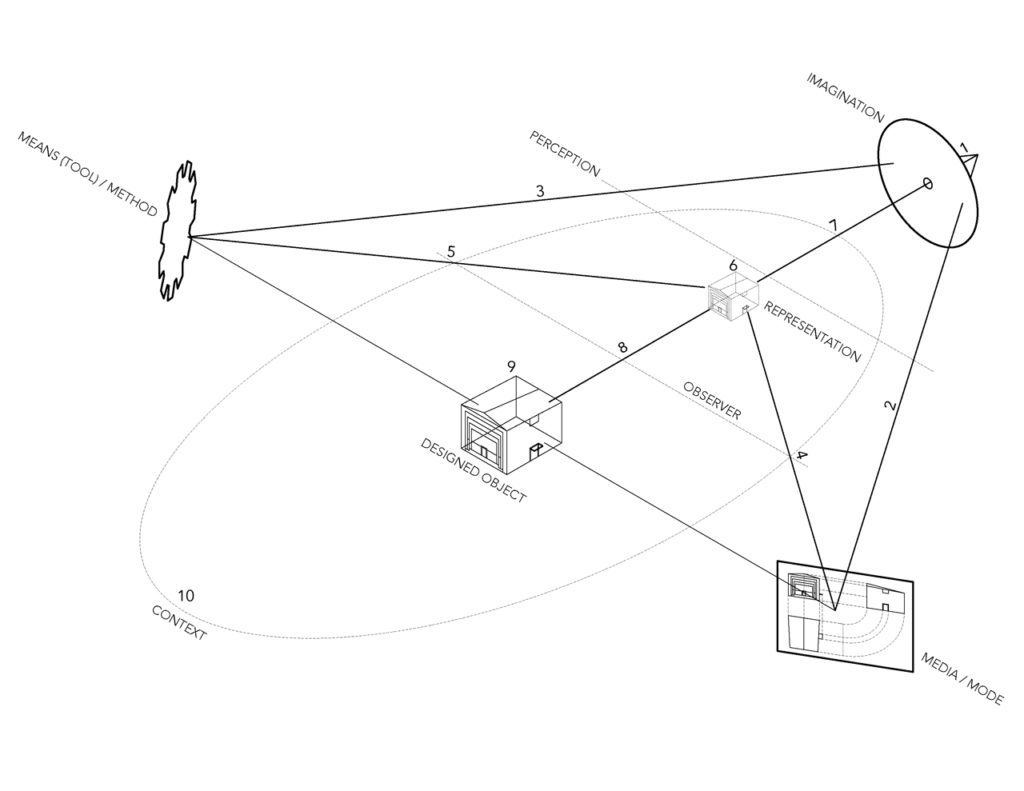“The Arresting Image,” a spin of Robin Evans’s “The Arrested Image” from The Projective Cast: Architecture and Its Three Geometries
***
My diving bell becomes less oppressive, and my mind takes flight like a butterfly. There is so much to do. You can wander off in space or in time, set out for Tierra del Fuego or for King Midas’s court.
You can visit the woman you love, slide down beside her and stroke her still-sleeping face. You can build castles in Spain, steal the Golden Fleece, discover Atlantis, realize your childhood dreams and adult ambitions.
Jean-Dominique Bauby, The Diving Bell and the Butterfly
There is so much to do.
On the eighth of December, 1995, Jean-Dominique Bauby, the 43 year-old author and editor of the French fashion magazine, ELLE, suffered a massive cerebrovascular stroke. The hemorrhage severed the connection between Bauby’s brain and spinal cord, rendering him mentally sound, but physically inert, “locked-in” – a mind without a body and a body without a mind.
If not for one weak, but intact link between his mental impulse and his sole form of expression, a chance transmission that enabled him to blink his left eye, the outside world might never have known about Bauby’s lingering sentience, much less the rich inner-life that he managed to communicate, letter-by-letter, to a patient translator and to which we now have access through both the text and film of The Diving Bell and the Butterfly.
Bauby’s poignant biography, more than a rarefied human interest story, presents a profound illustration of the universal tragedy of the disassociation of thought and matter. The Jean-Dominique Bauby case vividly demonstrates not simply a conditional interdependence of the psyche and the corpus for the functionality of life. It reveals that the relationship between the brain and the body is much more than mechanical, that the two, quite literally, are one and the same, do not exist without the other.
Even as Bauby embarks upon imaginary travels to escape theoretically his actual immobility, he conceives through the forms of his past sensory experiences. And, even as the largely vacated vessel that once conveyed Bauby through an exteriority of both concept and space lies impotent and paralyzed, its contours and shapes remember the lost intelligence that once charged them.
Similarly, Bauby shows us that humanity, this mind-body construct, is existentially all-inclusive, that the perception of the human mind-body is possible only through an extensive understanding of mind-bodies, of an appreciation of everything, organisms and objects, as thought-matter. It is, after all, the ideas and information of the animate and inanimate alike around which Bauby’s consciousness congeals; and, it is the tangibility – or lack thereof – of Bauby’s kinetic and static surrounds against which his presence is measured. In other words, his awareness, both mental and physical, is a composition of all that is other to him… just as the essential unity of the immaterial and material is an ubiquity, however unrecognized, for us all.
***
I am fascinated by embodied intelligences – both in the means and materialization of thought (how an idea gets turned into a thing) and as a legibility of thought read through things (the how and what communicated by things). I have an endless curiosity for the reciprocities of influence across creative processes (between ideation and argumentation, methodology, tool use, media behavior, and output); the plays of chance and control that nurture something’s coming into being mesmerize me. And, in reverse, I aspire after relational architectures, object and spatial bodies that cultivate connection and engender empathy through intrinsic histories, fictions, sensualities, and affinities.
*Home post image: Sir Edmund Halley’s diving bell, 1857 (unknown French illustrator)

